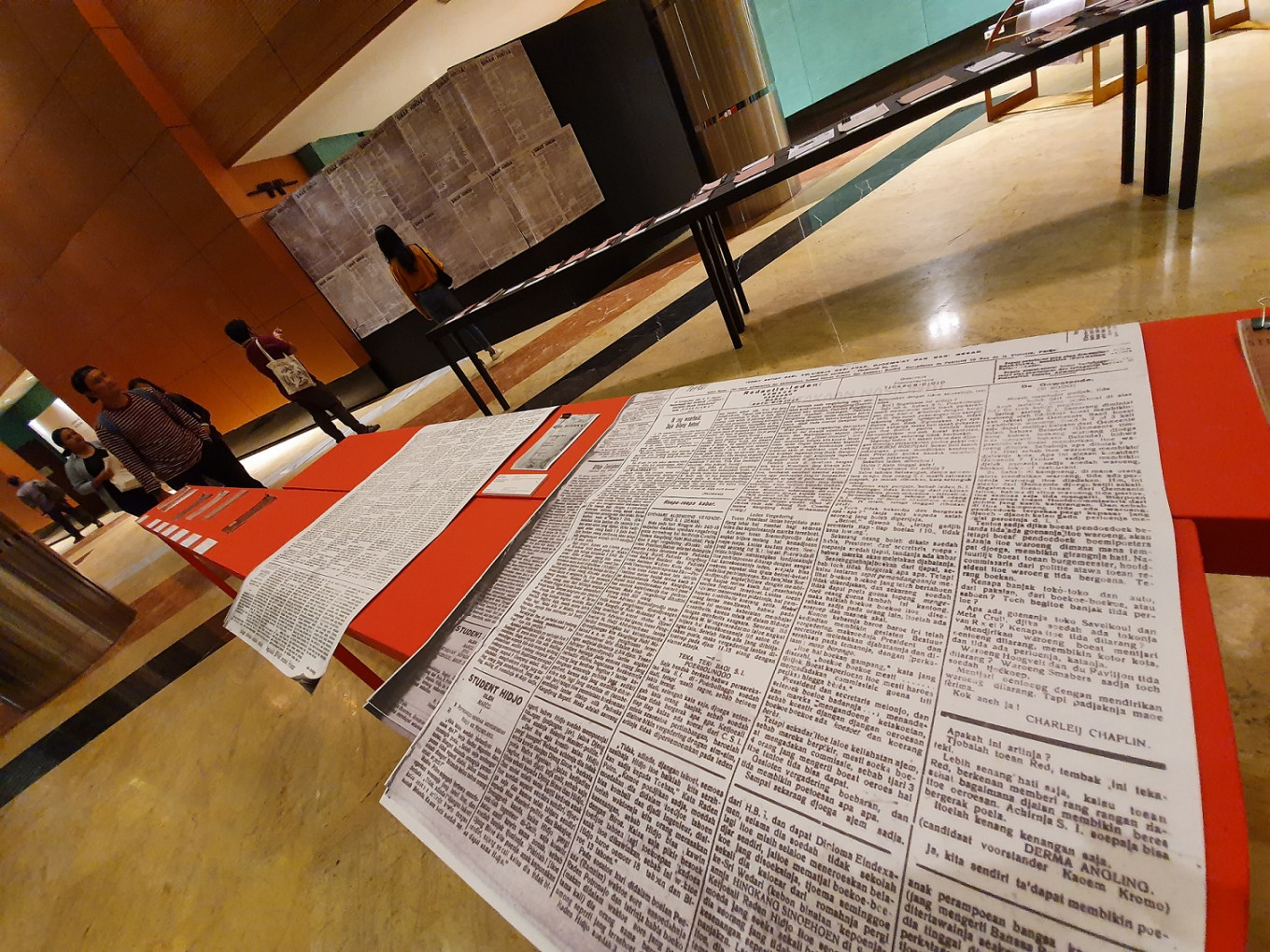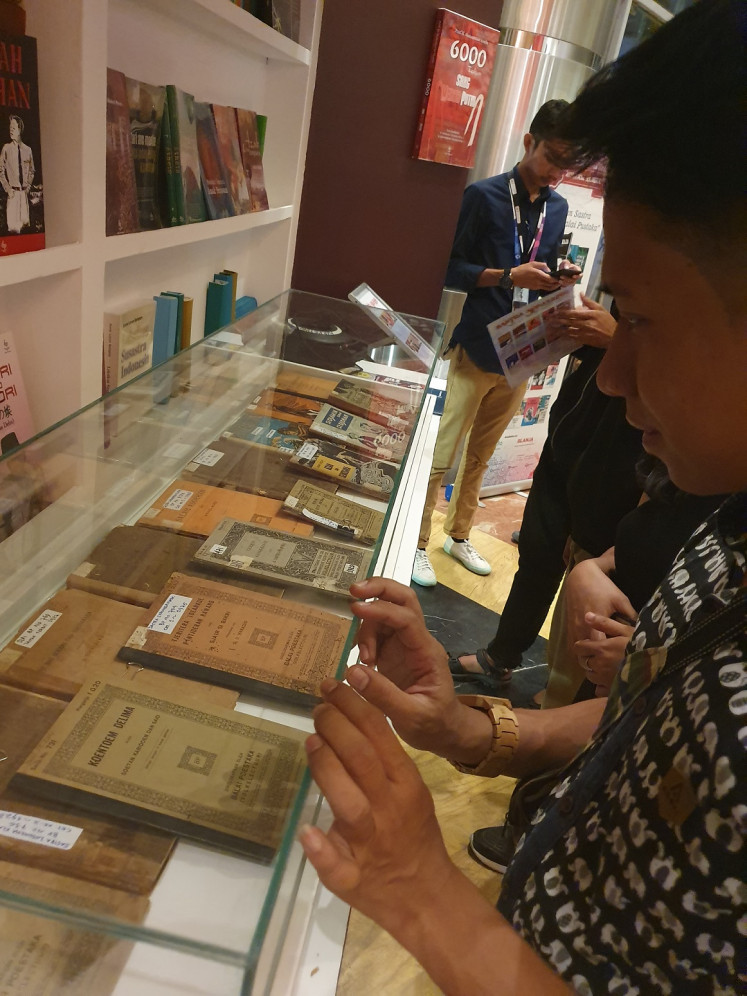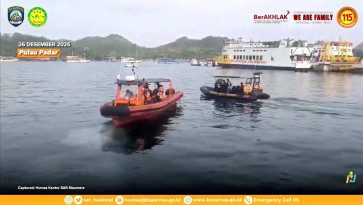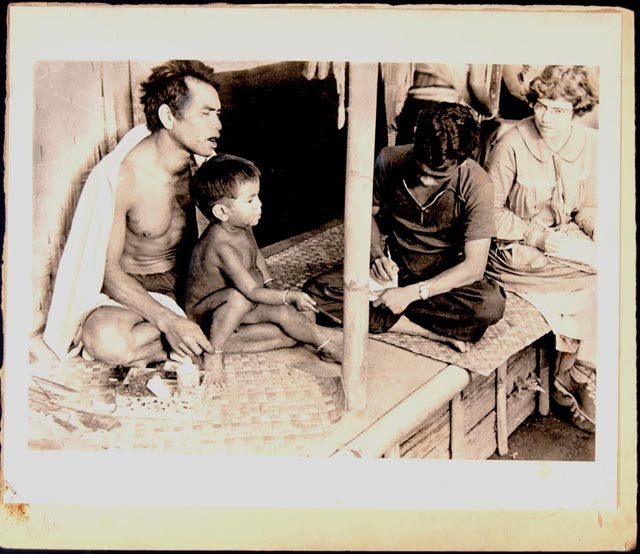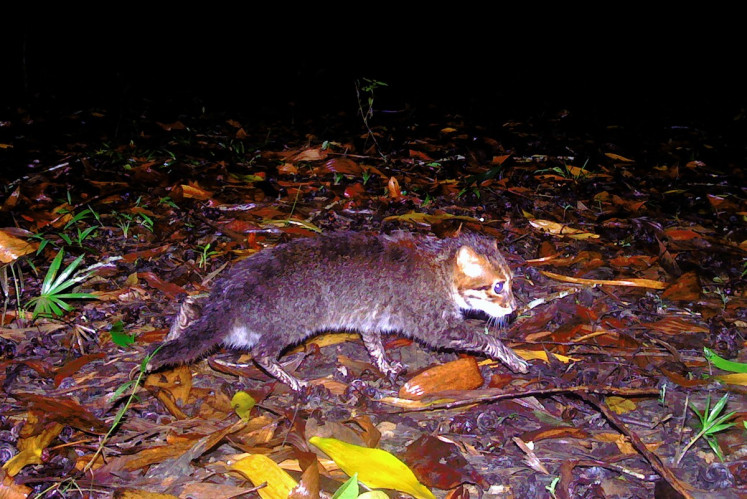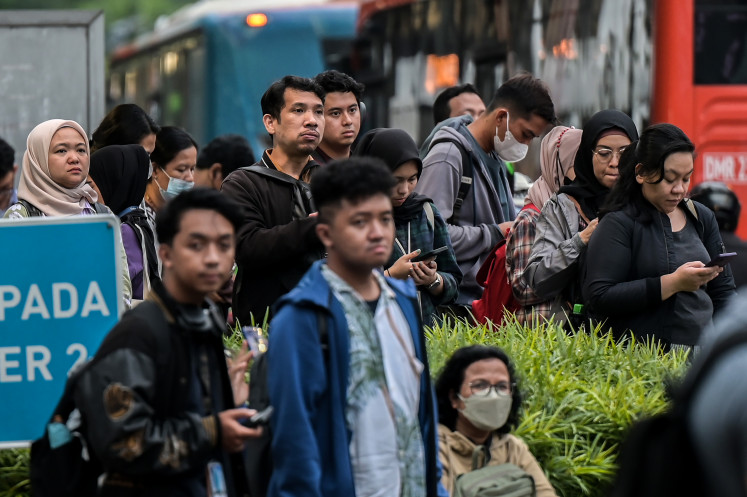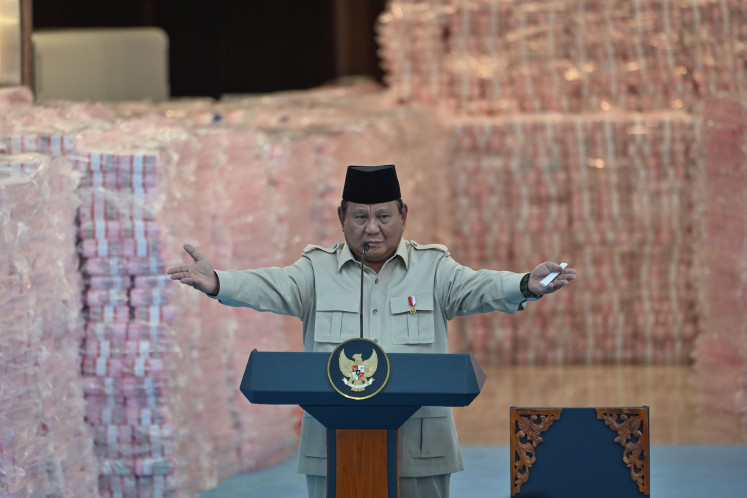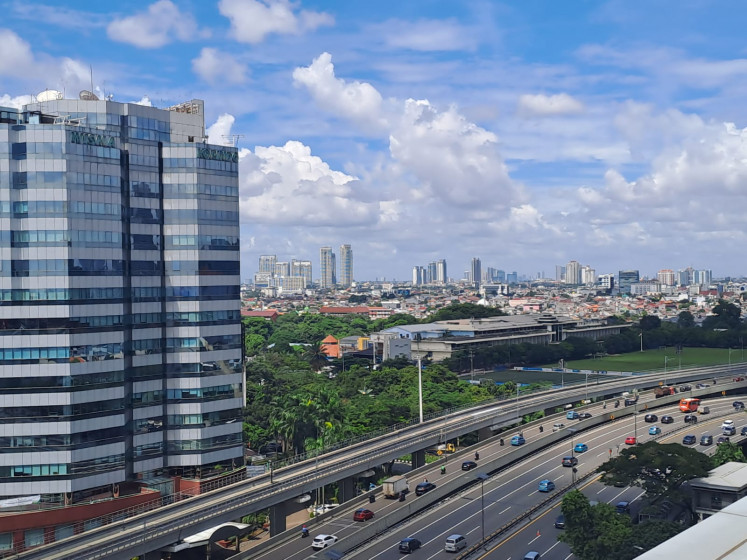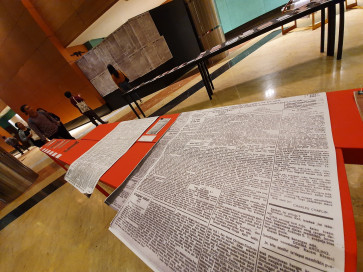Popular Reads
Top Results
Can't find what you're looking for?
View all search resultsPopular Reads
Top Results
Can't find what you're looking for?
View all search resultsFestival showcases Indonesia's 'wild literature' of the colonial era
The modern Indonesia language was once used as a weapon of destruction against the nation's literary traditions.
Change text size
Gift Premium Articles
to Anyone
T
he exhibition’s title, “Colonial Bastard: The Forbidden Fictions”, is as intriguing as the collection of magazines, newspapers and pocketbooks that were published in the country since the early 1900s.
Although only a few of them have been put on display at Teater Kecil in the Taman Ismail Marzuki arts and culture center in Central Jakarta, the numbers of copies, as well as the varied genres, are enough to show how rich the nation’s literary tradition was in the past.
Mandatory reading material: A visitor looks at the original copies of Balai Pustaka's canons. Some of the books are still reprinted and used in schools. (JP/Tertiani ZB Simanjuntak)“While we question the nation’s reading interests today, we have the record in history as a comparison,” Isyana Artharini, one of the curators of the Jakarta International Literary Festival, told The Jakarta Post.
“This exhibition shows the richness of the knowledge of the writers, how they chronicled the era, giving details on what really happened at that time,” she added.
The theme of the exhibition, which will proceed until Aug. 24 and opens from 10 a.m. to 10 p.m., is based on research conducted by writers Berto Tukan and Sulaiman Harahap in their search for the literary traditions of the colonial era.
The researchers found the vast number of reading materials that were labeled “bacaan liar” (wild literature) by the colonial authorities in contrast to the “curated” works selected and published by the literature bureau, today known as the Balai Pustaka.

